Seoul Cathedral Anglican Church or Korea (대한성공회 서울주교좌성당)
9.9Km 2020-03-30
15, Sejong-daero 21-gil, Jung-gu, Seoul
+82-2-730-6611
Seoul Cathedral Anglican Church of Korea began
construction under Mark Trollope, the third bishop of the Anglican Church of Korea, in 1922. It was designed by a English architect Arthor Dixon. Dedication ceremony of the church was held On May 2, 1926 when the construction work hadn't been completed yet. At that time, the church building was a 3-storey building with
a 992 m² floor size. Later in 1993, the original blue print of the church was found at a library in England and the construction resumed
and would be completed in 1996.
The church building is a harmonious combination of Romanesque and traditional Korean style. The exterior of the church is shaped like a cross with various lines placed in harmony. Inside the cathedral, there are 12 stone columns symbolizing the 12 apostles, a
mosaic of Jesus on the front wall, and a brass plate in commemoration of Mark Trollope. Under the brass plate, the
remains of the bishop Mark Trollope are enshrined.
* Size: B1-3F
* Building site area: 519㎡ (157 pyeong), Ground area 909㎡ (275 pyeong)
Deoksugung Stone Wall Path (덕수궁 돌담길)
9.9Km 2025-01-10
24 Sejong-daero 19-gil, Jung-gu, Seoul
The Deoksugung Stone Wall Path runs along the wall of Deoksugung Palace. It is beautifully lit and landscaped, giving it a romantic atmosphere even at night. There are street performances and flea markets, and the area boasts many famous cafes and restaurants along Jeongdong street. In autumn, the ginkgo trees and walls form a stunning scene. Close to major cultural facilities such as the Seoul Museum of Art and Seoul Museum of History, it attracts numerous visitors come for a stroll.
Vegetarian Restaurant Osegyehyang (채식요리전문점 오세계향)
9.9Km 2024-03-18
14-5 Insadong 12-gil, Jongno-gu, Seoul
+82-2-735-7171
Osegyehyang is a vegetarian restaurant located in Insa-dong. It specializes in vegetarian cuisine, offering a variety of dishes including noodles, traditional Korean dishes, and specialty items. Some of its popular dishes include maesil tangsuchae (vegan deep-fried pork with sweet and sour sauce), pyogobeoseotmari (rolled shiitake mushrooms), vegan yangnyeom chicken (vegan seasoned fried chicken), tteokbokki, jjajangmyeon (black bean sauce noodles), jjamppong (spicy seafood noodle soup), vegan steak, and bulgui ttukbaegi (vegan bulgogi), all prepared without meat but still delicious.
Seoul International Writers' Festival (서울국제작가축제)
9.9Km 2025-07-30
26 Insadong 9-gil, Jongno-gu, Seoul
+82-70-8826-5207
Seoul International Writers' Festival was founded in 2006 with aims to lay a foundation for connecting Korean literature and international literature. This year's theme is "() Meets the Eye," inviting attendees to explore the beauty of literature that is much more than meets the eye.
Gwanak Kang Gam-chan Festival (관악강감찬축제)
9.9Km 2025-07-11
77 Nakseongdae-ro, Gwanak-gu, Seoul
+82-2-828-5765
The Gwanak Gang Gam-chan Festival is a historical and cultural event held to honor the patriotic spirit of General Gang Gam-chan, a famous general from the Goryeo Dynasty. The festival is known for its impressive night events, fitting for the location named after a falling star, and features a variety of parades and performances.
◎ Gang Gam-chan and Nakseongdae
General Gang Gam-chan of Goryeo is said to have been born at the place where the fourth star of the Big Dipper fell. This place is called Nakseongdae, which means “the place where the star fell.”
Deoksugung Palace (덕수궁)
9.9Km 2025-06-25
99 Sejong-daero, Jung-gu, Seoul
Registered as a Historic Site, Deoksugung Palace was initially not a royal palace, but the residential home of Grand Prince Wolsan (1454-1488), the older brother of King Seongjong (1469-1494) of the Joseon dynasty. It wasn't until 1593 that the palace was used as a temporary palace of the royal family after their home was burned down during the Imjin War. King Seonjo also stayed at Deoksugung Palace after returning to the city. It became a proper palace when Gwanghaegun (1575-1641) ascended to the throne and gave this royal residence the name Gyeongungung Palace in 1611. Over the following decades, the palace alternated between being an official palace and a temporary residence. The name did not change officially to Deoksugung Palace, meaning the “palace of virtuous longevity,” until 1907. While the palace once encompassed a vast area with many buildings, the current palace grounds are just a small shadow of the prior splendor, with very few structures remaining.
PORKLAND (포크랜드)
9.9Km 2021-03-30
258-10, Changgyeonggung-ro, Jongno-gu, Seoul
+82-2-745-7878
It is a place that not only office workers but also college students often visit. The best menu at this restaurant is spicy pork shoulder shabu-shabu. This Korean dishes restaurant is located in Jongno-gu, Seoul.
Olens - Gwanghwamun Branch [Tax Refund Shop] (오렌즈 광화문)
9.9Km 2024-04-18
1F, 82, Sambong-ro, Jongno-gu, Seoul
-
Insadong Sagwanamu (인사동사과나무)
9.9Km 2021-03-29
24-1, Insadong 14-gil, Jongno-gu, Seoul
+82-2-722-5051
This is where you can dine on the outdoor terrace. This restaurant's signature menu is steak. This Western dishes restaurant is located in Jongno-gu, Seoul.
Changdeokgung Injeongmun Gate (창덕궁 인정문)
9.9Km 2025-01-14
99, Yulgok-ro, Jongno-gu, Seoul
+82-2-3668-2300
Serving as the main gate of Injeongjeon Hall, Injeongmun Gate was established in 1405 (5th year of King Taejo’s reign during the Joseon dynasty). Later on, the gate was destroyed by multiple fires during the Imjin War (Japanese invasion of Korea in 1592), therefore current form of the establishment displays designs that are more often seen in the late 19th century's. In addition, a lot
of subsidary marks and buildings are removed from the original places and relocated passing the time, however, still remains to represent prestigious ambience.
Injeongmun Gate served as the place for several coronation ceremonies of kings, prince's succession of throne, and many other national affairs celebrated by the royal members who gathered and aligned around this gate.
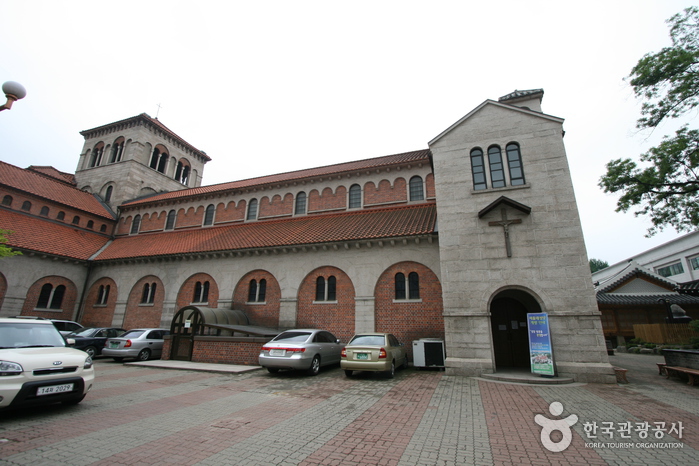
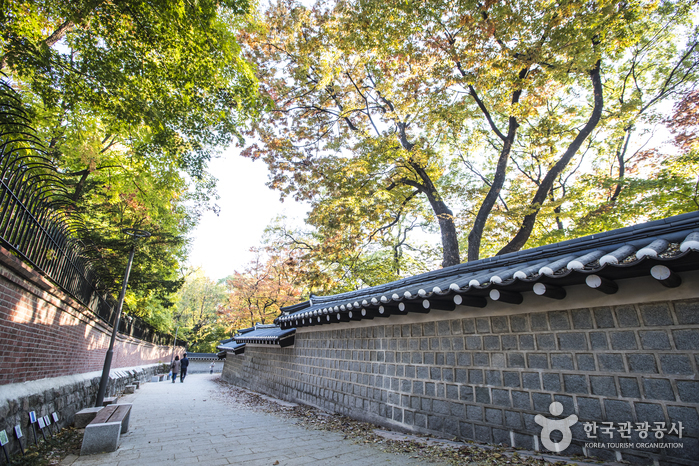


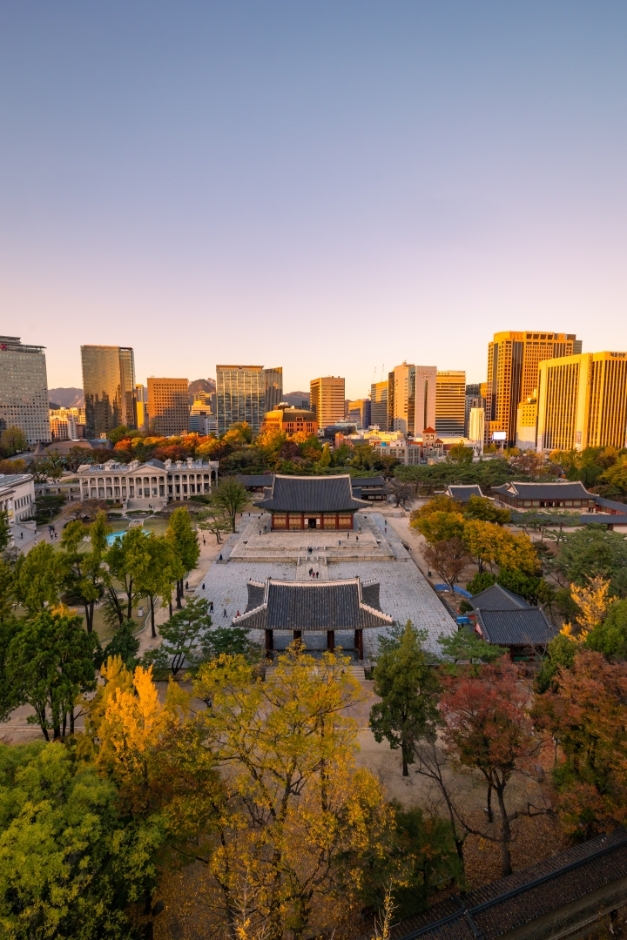
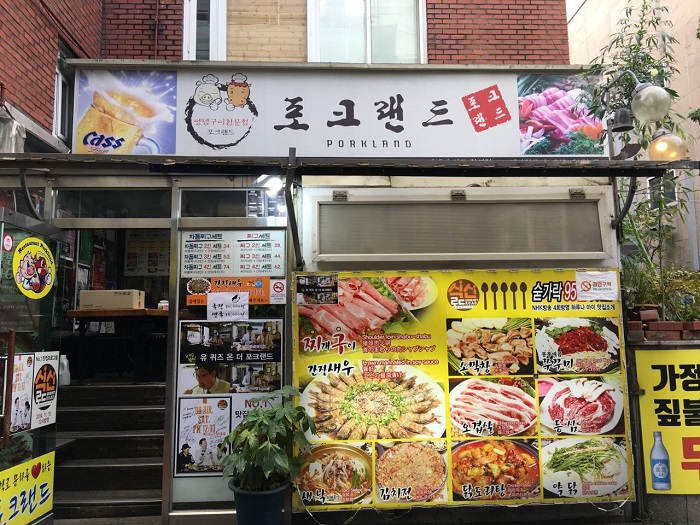
![Olens - Gwanghwamun Branch [Tax Refund Shop] (오렌즈 광화문)](http://tong.visitkorea.or.kr/cms/resource/17/2878217_image2_1.jpg)

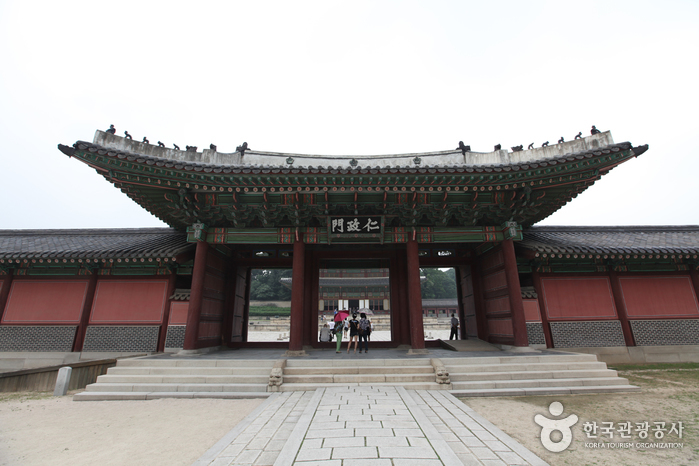
 English
English
 한국어
한국어 日本語
日本語 中文(简体)
中文(简体) Deutsch
Deutsch Français
Français Español
Español Русский
Русский